Power consumption in direct comparison
We have measured all the platforms again and are also going into the race a little better cooled. But more on that. First of all, let's look at the pure values of the idle CPU, which has been measured over a longer period of time, which includes various bites of the system. The fact that the core i7-6900K, which is overclocked at 3.8 GHz, is slightly better in the idle than in the factory state is due to the fact that we have of course lowered the turbo to this cycle with a core. We have also been able to detect this behaviour in other things from time to time.
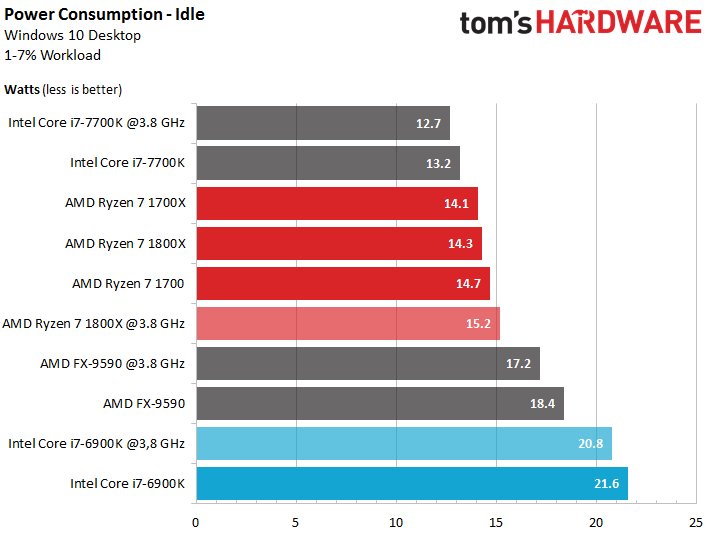
In the combined CAD test run, the AMD CPUs are significantly more economical, although of course the 2D share and significantly lower performance are the most important reason for this. If you weigh the overall performance against the power consumption on average, then the 8-core CPUs of AMD and Intel are slightly equal.
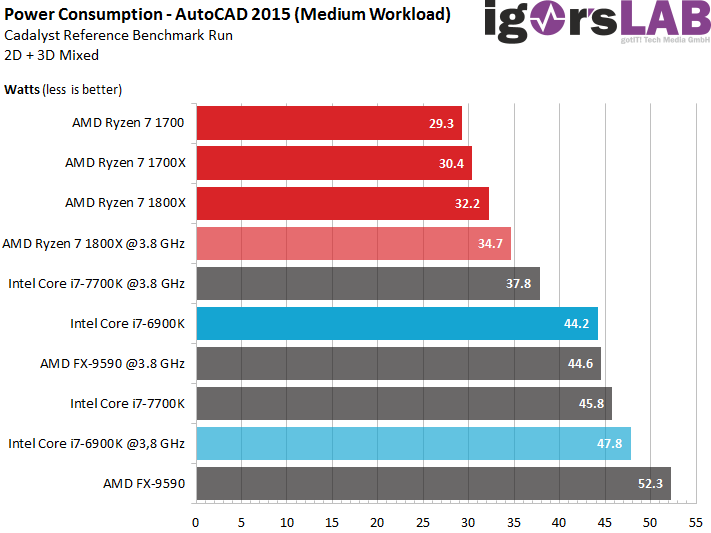
The same applies to gaming, where even the AMD eight-coreers can show the Intel counterpart the cold shoulder. It's been a long time since AMD was at least equal in terms of efficiency.
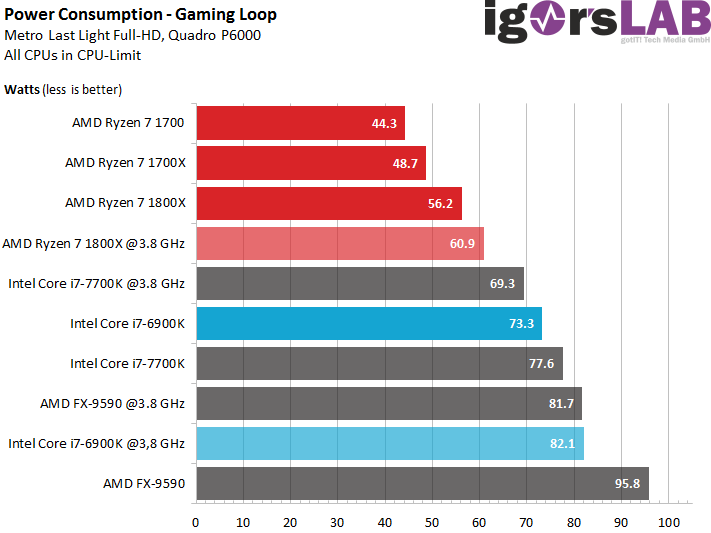
Only during the stress test does the 3.8 GHz Ryzen 7 open its floodgates and it is said at the socket as if there was no tomorrow. But stop! Even the similarly potent core i7-6900K with 3.8 GHz is not a food scorner and even puts a skip on it.
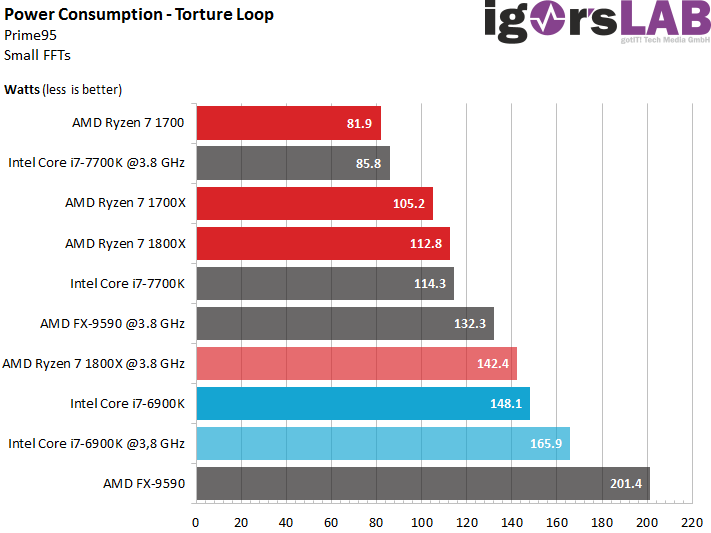
The bottom line is that AMD has the apparently somewhat finer-graded power management, because when you offset performance and power consumption, Intel usually (though narrowly) has the lag. You don't have to lament about the Core i7-7700K in the factory state, it's just a prisoner in your clock body. It only becomes efficient at a human3.8 GHz, but who wants to use this CPU so foam-braked in everyday life?
Temperatures
Sure, with a proper water cooling you get (almost) everything cool enough, but also there are quite clear differences in the end in terms of the individual CPUs. Who have optimized our CPU cooler for the socket AM4 once again by increasing the contact pressure to a now normal value (0.4 Nm) by means of two nuts pushed between the spring and the bracket. Therefore, they are also different from those of the launch article, where we only used washers.
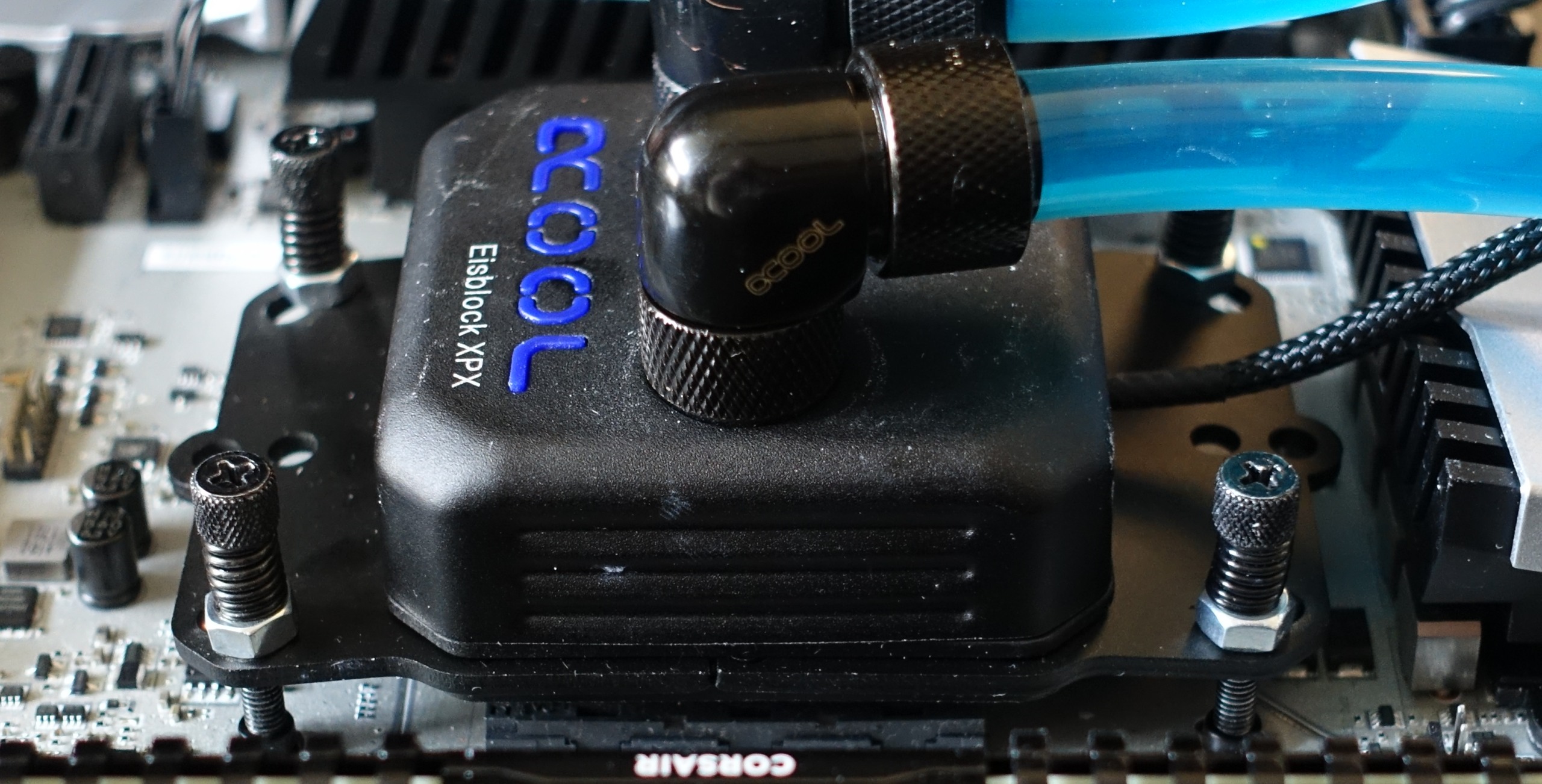
In addition, because the power consumption was measured again, we have once again recorded the temperature of all other CPUs exactly for each pass. However, due to the extreme cooling performance, everything below 50 watts of waste heat is hardly measurable any more meaningfully measurable, so we have limited ourselves to gaming and the stress test.
With regard to AMD's FX-9590, we have to say that the temperatures read out are to be marked with a slight question mark, since with the older CPU models of AMD (from Bulldozer) all sorts of things are returned, but not really 100% reliable values. In addition, the temperatures for the Ryzen CPUs (GPU diode in the package) and Intel's Core i7 cannot be compared exactly, because there are different solution starts for the sensors.
The Core i7-7700K is the only CPU with the Handycap of cheap thermal paste between Die and Heatspreader, which is already very negative in gaming. AMD has thankfully soldered the heat spreader on the Ryzen models, which leads to really good temperatures. Of course, this must always be seen in the direct context of the power converted into heat:
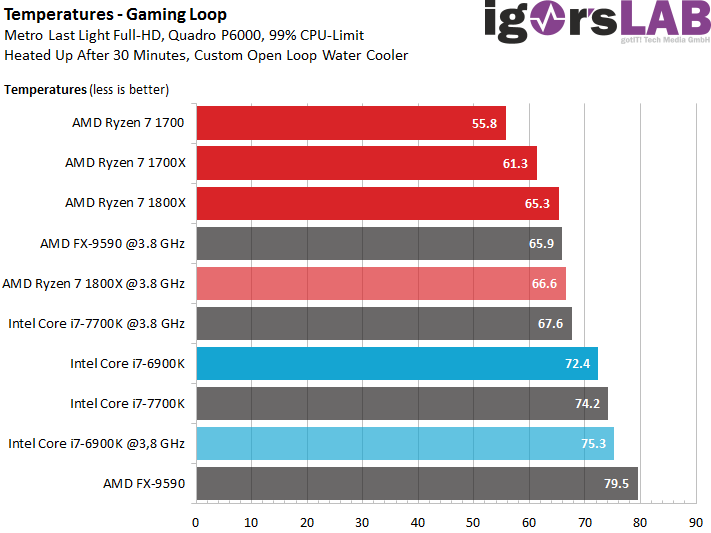
The image is similar in the stress test, but all three Ryzen 7, which is overclocked at 3.8 GHz, leave thermal springs at just over 140 watts. But this is still coolable as long as it happens with water and the cooling solution is not too cheap.
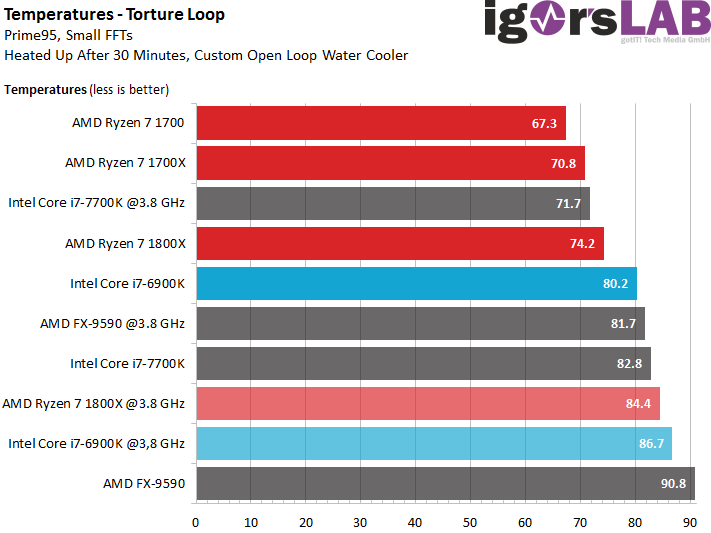
Intermediate conclusion
At AMD, both the power consumption and the resulting waste heat are in areas that you can only look forward to. Even if the gaming performance in some areas lags slightly behind the Core i7 7700K – the more sensible CPU with the more reasonable values comes from AMD and also has a feature with a blob lot, for which you can then reach for the enthusiast platform at Intel Must. Intel's (currently) fastest consumer processor strangles its lead by slamming hard at the clock-setting cotz limit, including thermal problems with simple coolers for free.

































Kommentieren